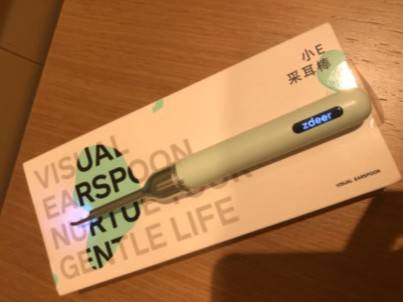遗传算法与深度学习实战——使用进化策略实现EvoLisa
- 0. 前言
- 1. 使用进化策略实现 EvoLisa
- 2. 运行结果
- 相关链接
0. 前言
我们已经学习了进化策略 (Evolutionary Strategies, ES) 的基本原理,并且尝试使用 ES 解决了函数逼近问题。函数逼近是一个很好的基准问题,但为了充分展示 ES 的作用,本节中,我们将重新思考 EvoLisa 问题,采用 ES 作为解决策略,以将 ES 和常规遗传算法进行对比。
1. 使用进化策略实现 EvoLisa
接下来,使用进化策略 (Evolutionary Strategies, ES) 通过复现 EvoLisa 项目重建《蒙娜丽莎》图像。
import random
import numpy as npfrom deap import algorithms
from deap import base
from deap import creator
from deap import toolsimport os
import cv2
import urllib.request
import matplotlib.pyplot as plt
from IPython.display import clear_outputdef load_target_image(image_url, color=True, size=None):image_path = "target_image" urllib.request.urlretrieve(image_url,image_path)if color:target = cv2.imread(image_path, cv2.IMREAD_COLOR)# Switch from bgr to rgbtarget = cv2.cvtColor(target, cv2.COLOR_BGR2RGB)else:target = cv2.imread(image_path, cv2.IMREAD_GRAYSCALE)if size:# Only resizes image if it is needed!target = cv2.resize(src=target, dsize=size, interpolation=cv2.INTER_AREA)return targetdef show_image(img_arr): plt.figure(figsize=(10,10))plt.axis("off")plt.imshow(img_arr/255)plt.show()def show_results(history, img_arr, org):plt.figure(figsize=(10,10))plt.tight_layout()plt.subplot(221)plt.axis("off")plt.imshow(img_arr/255)plt.title('best of generation')plt.subplot(222)plt.axis("off")plt.imshow(org/255)plt.title('target image')plt.subplot(212)lh = len(history)plt.xlim([lh-50, lh])plt.plot(history)plt.title('min fitness by generation') plt.show()polygons = 255 #@param {type:"slider", min:10, max:1000, step:1}
size = 32 #@param {type:"slider", min:16, max:1000, step:2}
target_image = "Mona Lisa" #@param ["Mona Lisa", "Stop Sign", "Landscape", "Celebrity", "Art", "Abstract"]
report_every_gen = 10 #@param {type:"slider", min:1, max:100, step:1}
number_generations = 10000 #@param {type:"slider", min:100, max:10000, step:10}POLYGONS = polygons
SIZE = (size, size)target_urls = { "Mona Lisa" : 'https://upload.wikimedia.org/wikipedia/commons/b/b7/Mona_Lisa_face_800x800px.jpg',"Stop Sign" : 'https://images.uline.com/is/image//content/dam/images/H/H2500/H-2381.jpg',"Landscape" : 'https://www.adorama.com/alc/wp-content/uploads/2018/11/landscape-photography-tips-yosemite-valley-feature.jpg',"Celebrity" : 'https://s.abcnews.com/images/Entertainment/WireAP_91d6741d1954459f9993bd7a2f62b6bb_16x9_992.jpg',"Art" : "http://www.indianruminations.com/wp-content/uploads/what-is-modern-art-definition-2.jpg","Abstract" : "https://scx2.b-cdn.net/gfx/news/2020/abstractart.jpg"}target_image_url = target_urls[target_image]
target = load_target_image(target_image_url, size=SIZE)
show_image(target)
print(target.shape)#polygon genes
GENE_LENGTH = 10
NUM_GENES = POLYGONS * GENE_LENGTH#create a sample invidiual
individual = np.random.uniform(0,1,NUM_GENES)
print(individual)
# [0.62249533 0.44090963 0.14777921 ... 0.57283261 0.9325435 0.25907929]def extract_genes(genes, length): for i in range(0, len(genes), length): yield genes[i:i + length]def render_individual(individual):if isinstance(individual,list):individual = np.array(individual)canvas = np.zeros(SIZE+(3,))radius_avg = (SIZE[0] + SIZE[1]) / 2 / 6genes = extract_genes(individual, GENE_LENGTH)for gene in genes:try:overlay = canvas.copy()# alternative drawing methods circle or rectangle# circle brush uses a GENE_LENGTH of 7# center = (0, 1) [2]# radius = (2) [3]# color = (3,4,5) [6]# alpha = (6) [7]#cv2.circle(# overlay,# center=(int(gene[1] * SIZE[1]), int(gene[0] * SIZE[0])),# radius=int(gene[2] * radius_avg),# color=color,# thickness=-1,#)# rectangle brush uses GENE_LENGTH = 8# top left = (0, 1) [2]# btm right = (2, 3) [4]# color = (4, 5, 6) [7]# alpha = (7) [8]#cv2.rectangle(overlay, (x1, y1), (x2, y2), color, -1) # polyline brush uses GENE_LENGTH = 10# pts = (0, 1), (2, 3), (4, 5) [6] # color = (6, 7, 8) [9]# alpha = (9) [10]x1 = int(gene[0] * SIZE[0])x2 = int(gene[2] * SIZE[0])x3 = int(gene[4] * SIZE[0])y1 = int(gene[1] * SIZE[1])y2 = int(gene[3] * SIZE[1])y3 = int(gene[5] * SIZE[1])color = (gene[6:-1] * 255).astype(int).tolist() pts = np.array([[x1,y1],[x2,y2],[x3,y3]], np.int32) pts = pts.reshape((-1, 1, 2))pts = np.array([[x1,y1],[x2,y2],[x3,y3]])cv2.fillPoly(overlay, [pts], color)alpha = gene[-1]canvas = cv2.addWeighted(overlay, alpha, canvas, 1 - alpha, 0) except:passreturn canvasrender = render_individual(individual)
show_image(render)from skimage.metrics import structural_similarity as ss
#@title Fitness Function
def fitness_mse(render):"""Calculates Mean Square Error Fitness for a render"""error = (np.square(render - target)).mean(axis=None)return errordef fitness_ss(render):"""Calculated Structural Similiarity Fitness"""index = ss(render, target, multichannel=True)return 1-indexprint(fitness_mse(render))IND_SIZE = NUM_GENES
MIN_VALUE = -1
MAX_VALUE = 1
MIN_STRATEGY = 0.5
MAX_STRATEGY = 5CXPB = .6
MUTPB = .3creator.create("FitnessMin", base.Fitness, weights=(-1.0,))
creator.create("Individual", list, typecode="d", fitness=creator.FitnessMin, strategy=None)
creator.create("Strategy", list, typecode="d")def generateES(icls, scls, size, imin, imax, smin, smax): ind = icls(random.uniform(imin, imax) for _ in range(size)) ind.strategy = scls(random.uniform(smin, smax) for _ in range(size)) return inddef checkStrategy(minstrategy):def decorator(func):def wrappper(*args, **kargs):children = func(*args, **kargs)for child in children:for i, s in enumerate(child.strategy):if s < minstrategy:child.strategy[i] = minstrategyreturn childrenreturn wrappper
return decoratordef uniform(low, up, size=None):try:return [random.uniform(a, b) for a, b in zip(low, up)]except TypeError:return [random.uniform(a, b) for a, b in zip([low] * size, [up] * size)]def clamp(low, up, n):return max(low, min(n, up))def custom_blend(ind1, ind2, alpha): for i, (x1, s1, x2, s2) in enumerate(zip(ind1, ind1.strategy,ind2, ind2.strategy)):# Blend the valuesgamma = (1. + 2. * alpha) * random.random() - alphaind1[i] = clamp(0.0, 1.0, (1. - gamma) * x1 + gamma * x2)ind2[i] = clamp(0.0, 1.0, gamma * x1 + (1. - gamma) * x2)# Blend the strategiesgamma = (1. + 2. * alpha) * random.random() - alphaind1.strategy[i] = (1. - gamma) * s1 + gamma * s2ind2.strategy[i] = gamma * s1 + (1. - gamma) * s2return ind1, ind2toolbox = base.Toolbox()
toolbox.register("individual", generateES, creator.Individual, creator.Strategy,IND_SIZE, MIN_VALUE, MAX_VALUE, MIN_STRATEGY, MAX_STRATEGY)
toolbox.register("population", tools.initRepeat, list, toolbox.individual)
toolbox.register("mate", custom_blend, alpha=0.5)
toolbox.register("mutate", tools.mutESLogNormal, c=1.0, indpb=0.06)
toolbox.register("select", tools.selTournament, tournsize=5)toolbox.decorate("mate", checkStrategy(MIN_STRATEGY))
toolbox.decorate("mutate", checkStrategy(MIN_STRATEGY))def evaluate(individual):render = render_individual(individual)print('.', end='')
return fitness_mse(render), #using MSE for fitness#toolbox.register("mutate", tools.mutGaussian, mu=0.0, sigma=.1, indpb=.25)
toolbox.register("evaluate", evaluate)NGEN = number_generations
RGEN = report_every_gen
CXPB = .6
MUTPB = .3
MU, LAMBDA = 100, 250
pop = toolbox.population(n=MU)
hof = tools.HallOfFame(1)
stats = tools.Statistics(lambda ind: ind.fitness.values)
stats.register("avg", np.mean)
stats.register("std", np.std)
stats.register("min", np.min)
stats.register("max", np.max) best = None
history = []for g in range(NGEN):pop, logbook = algorithms.eaMuCommaLambda(pop, toolbox, mu=MU, lambda_=LAMBDA, cxpb=CXPB, mutpb=MUTPB, ngen=RGEN, stats=stats, halloffame=hof, verbose=False)best = hof[0]#pop, logbook = algorithms.eaSimple(pop, toolbox, # cxpb=CXPB, mutpb=MUTPB, ngen=100, stats=stats, halloffame=hof, verbose=False)#best = hof[0] clear_output() render = render_individual(best) history.extend([clamp(0.0, 5000.0, l["min"]) for l in logbook])show_results(history, render, target) print(f"Gen ({(g+1)*RGEN}) : best fitness = {fitness_mse(render)}")
2. 运行结果
下图显示了代码的运行结果,作为对比,图中还显示了使用经典遗传算法生成的结果。

相关链接
遗传算法与深度学习实战(1)——进化深度学习
遗传算法与深度学习实战(4)——遗传算法(Genetic Algorithm)详解与实现
遗传算法与深度学习实战(5)——遗传算法中常用遗传算子
遗传算法与深度学习实战(6)——遗传算法框架DEAP
遗传算法与深度学习实战(7)——DEAP框架初体验
遗传算法与深度学习实战(10)——使用遗传算法重建图像
遗传算法与深度学习实战(14)——进化策略详解与实现



















